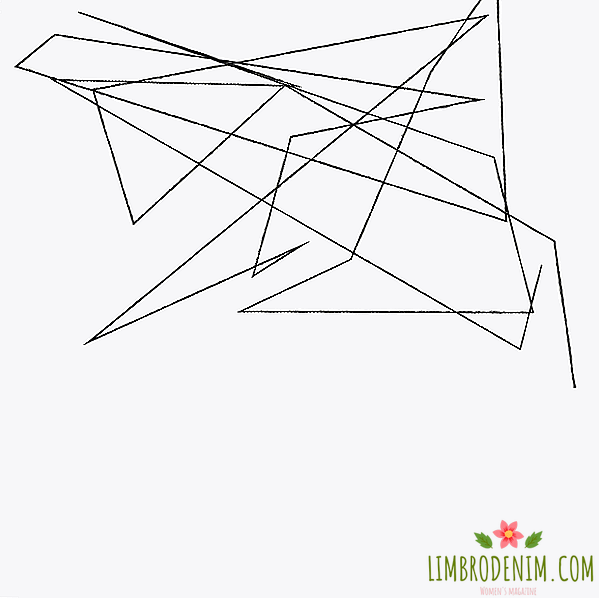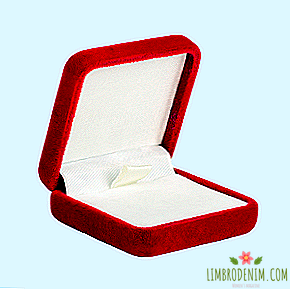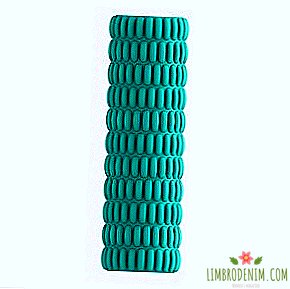Easter pastries and desserts from around the world: 5 recipes
Text: Karina Sembe
Easter can be different - it is celebrated by both Catholics and Orthodox, and the Jews (though the latter have another reason for the holiday). Traditional Easter dishes differ in many ways from country to country, but pastries are always happy. The British, Germans and French prepare sweet muffins, chocolate eggs and Easter bunny in all sorts of variations - from cakes to gingerbread. Orthodox Easter is celebrated with sweet and cottage cheese cakes, and each cook has his own recipe with a twist. Sweets are prepared for Passover without flour (with the exception of nut and matsovaya), because they are easy, but this does not lose their taste.
The weakness for Easter baking does not necessarily come complete with the observance of religious rituals, but, having mastered the preparation of sweets, time-tested, you can enjoy yourself with unbanal desserts all year round. For Easter baking, not without reason, the glory of complex dishes was fixed. Marzipan cupcakes or rum cake will keep you in the kitchen for a couple of hours, but, armed with a detailed recipe, you will overcome this height without super efforts. We chose five variants of Easter desserts from different national cuisines - from English to Israeli - and made step-by-step recipes for them.
Marzipan buns simnel
Simnel - marzipan Easter cake, which is prepared in England and Ireland since the Middle Ages. In the Commonwealth countries, from Britain to Australia and South Africa, another traditional dish is in high esteem - the so-called hot cross buns, spicy muffins with raisins, which usually depict a cross made of glaze or dough. In order not to make a choice between two Easter desserts, we offer a recipe that combines both traditions and is baked according to the principle of classic Chelsea buns.
Ingredients (for 12 small buns):
Cooking:
 Mix flour, sugar, yeast, zest and salt. In a separate container, beat the egg with milk and almond extract, then slowly pour in the dry mixture, stirring. Leave the mixture for 10 minutes.
Mix flour, sugar, yeast, zest and salt. In a separate container, beat the egg with milk and almond extract, then slowly pour in the dry mixture, stirring. Leave the mixture for 10 minutes.
 Knead the dough until a homogeneous, non-sticky consistency. Place the dough in a bowl greased with vegetable oil, seal with cling film and allow it to rise for an hour, until the volume doubles.
Knead the dough until a homogeneous, non-sticky consistency. Place the dough in a bowl greased with vegetable oil, seal with cling film and allow it to rise for an hour, until the volume doubles.
 Mix spices, sugar, butter and lemon juice to a pasty mass, then add candied fruits and 50 g marzipan. Stir the filling thoroughly.
Mix spices, sugar, butter and lemon juice to a pasty mass, then add candied fruits and 50 g marzipan. Stir the filling thoroughly.
 Roll out the dough into a rectangle about 35 x 25 cm. Spread the filling evenly over it and wrap it in a thick roll, then cut it into 12 equal pieces. To prevent dough and stuffing from sticking to the knife, lightly sprinkle it with flour. Cover the buns and leave for 30-45 minutes to rise.
Roll out the dough into a rectangle about 35 x 25 cm. Spread the filling evenly over it and wrap it in a thick roll, then cut it into 12 equal pieces. To prevent dough and stuffing from sticking to the knife, lightly sprinkle it with flour. Cover the buns and leave for 30-45 minutes to rise.
 Prepare a baking sheet: grease with butter, cover with parchment for baking. Bake buns in the oven at a temperature of 180-200 degrees for about 30 minutes. Cover the finished buns with jam, and when they are cold, sprinkle them with syrup from powdered sugar and water. If you are ready to go to the end in keeping the traditional recipe, make 11 peas from marzipan, which symbolize 11 apostles (with the exception of Judas), and scatter over the buns along with almond flakes.
Prepare a baking sheet: grease with butter, cover with parchment for baking. Bake buns in the oven at a temperature of 180-200 degrees for about 30 minutes. Cover the finished buns with jam, and when they are cold, sprinkle them with syrup from powdered sugar and water. If you are ready to go to the end in keeping the traditional recipe, make 11 peas from marzipan, which symbolize 11 apostles (with the exception of Judas), and scatter over the buns along with almond flakes.
Tart with rhubarb and custard
The British and Americans cook this dessert with rhubarb grown in a dark greenhouse in winter. Such rhubarb turns bright pink, its texture is softer than that of a relative from the garden, and the taste is sweeter and softer, with more pronounced characteristic notes of rhubarb. The season of greenhouse rhubarb expires just after Catholic Easter, because in the US and Europe they are trying to have time to cook all sorts of desserts and cocktails based on this plant. For the sake of justice, we note that ordinary rhubarb is quite suitable for Easter tart.
Ingredients (for 8 servings):
Cooking:
 Mix the flour, powdered sugar and a pinch of salt, then add the butter and mash it thoroughly. Add one egg yolk, vanilla and a tablespoon of cold water, mix. Now knead the dough with your hands and send to the refrigerator for 1 hour.
Mix the flour, powdered sugar and a pinch of salt, then add the butter and mash it thoroughly. Add one egg yolk, vanilla and a tablespoon of cold water, mix. Now knead the dough with your hands and send to the refrigerator for 1 hour.
 Heat a saucepan or frying pan over medium heat, put vanilla beans from a pod or vanilla paste on it, add milk and bring to a boil. Beat the egg, two extra yolks, sugar and cornmeal to a smooth consistency. Pour milk into the mixture and mix. Send the cream to the pan and cook, stirring, for about 2-3 minutes (the cream should thicken). Add the butter to the cream and stir until it melts. Cover the cream with food film and leave in the refrigerator for 3 hours.
Heat a saucepan or frying pan over medium heat, put vanilla beans from a pod or vanilla paste on it, add milk and bring to a boil. Beat the egg, two extra yolks, sugar and cornmeal to a smooth consistency. Pour milk into the mixture and mix. Send the cream to the pan and cook, stirring, for about 2-3 minutes (the cream should thicken). Add the butter to the cream and stir until it melts. Cover the cream with food film and leave in the refrigerator for 3 hours.
 On a surface covered with flour, roll out the dough for a tart into a rectangle the size of your baking tray. Take a deep pan, grease with vegetable oil, cover with parchment. Place the dough on the baking sheet, turning off the edges, and cut off the excess. Put the dough in the fridge for 30 minutes.
On a surface covered with flour, roll out the dough for a tart into a rectangle the size of your baking tray. Take a deep pan, grease with vegetable oil, cover with parchment. Place the dough on the baking sheet, turning off the edges, and cut off the excess. Put the dough in the fridge for 30 minutes.
 Preheat oven to 160-180 degrees. Cover the tart dough with parchment, sprinkle rice on top and bake for 30 minutes. Then remove the rice and parchment and bake for another 5 minutes until the base for the tart is golden. Brush with whipped egg yolk and let it bake in the oven for 1 minute. Now the base should cool down.
Preheat oven to 160-180 degrees. Cover the tart dough with parchment, sprinkle rice on top and bake for 30 minutes. Then remove the rice and parchment and bake for another 5 minutes until the base for the tart is golden. Brush with whipped egg yolk and let it bake in the oven for 1 minute. Now the base should cool down.
 Increase the oven temperature by 20 degrees. In a baking dish, spread rhubarb in a single layer, sprinkle with sugar, add vanilla (use beans and whole pod), pour orange juice. Bake for 15-20 minutes, until the rhubarb is soft and does not let the syrup. After that, remove the mold from the oven, remove the vanilla pod and allow the rhubarb to cool.
Increase the oven temperature by 20 degrees. In a baking dish, spread rhubarb in a single layer, sprinkle with sugar, add vanilla (use beans and whole pod), pour orange juice. Bake for 15-20 minutes, until the rhubarb is soft and does not let the syrup. After that, remove the mold from the oven, remove the vanilla pod and allow the rhubarb to cool.
 Beat the cooled custard lightly and spread evenly over the tart base. Top with rhubarb, lightly grease with syrup and sprinkle with pistachios.
Beat the cooled custard lightly and spread evenly over the tart base. Top with rhubarb, lightly grease with syrup and sprinkle with pistachios.
Curd Easter
You can make a curd cake by adding cottage cheese to yeast dough, but there are also traditional versions without baking. For custard Easter, the ingredients are boiled and then added to fresh cottage cheese, and to cook raw enough to grind all the ingredients until a smooth creamy texture.
The canonical curd Easter is made in the form of a pyramid, which symbolizes nothing else but the Holy Sepulcher. Instead of a special form, other improvised means are often used, for example a colander - it turns out not so similar to the Coffin, but no worse.
Easter cheese is better to cook from dry, pressed from the whey curd - then it will not stand out from the extra liquid. We advise you to replace sugar with honey and use not too fat cream and cottage cheese - in this case, curd Easter will go for a healthy dessert.
Ingredients (for 1 big easter):
Cooking:
 Squeeze the cottage cheese through a colander or cheesecloth, mash thoroughly and mix with melted butter to a uniform consistency. In a metal saucepan, beat the eggs with sugar and vanilla paste, pour the cream into the mixture, mix. Bring the mixture to a boil and cook over low heat for 2-3 minutes, stirring continuously, and then cool.
Squeeze the cottage cheese through a colander or cheesecloth, mash thoroughly and mix with melted butter to a uniform consistency. In a metal saucepan, beat the eggs with sugar and vanilla paste, pour the cream into the mixture, mix. Bring the mixture to a boil and cook over low heat for 2-3 minutes, stirring continuously, and then cool.
 Raisin mix with a teaspoon of flour - this will allow it to be evenly distributed in Easter. Add the raisins, candied fruits and egg-based mixture to the mashed cottage cheese, mix thoroughly.
Raisin mix with a teaspoon of flour - this will allow it to be evenly distributed in Easter. Add the raisins, candied fruits and egg-based mixture to the mashed cottage cheese, mix thoroughly.
 In a colander or a form for Easter, lay a clean gauze, folded in several layers, so that its edges hang down. Put the curd mass and cover with the edges of the gauze. Substitute a bowl under the form for draining liquid.
In a colander or a form for Easter, lay a clean gauze, folded in several layers, so that its edges hang down. Put the curd mass and cover with the edges of the gauze. Substitute a bowl under the form for draining liquid.
 Press down the cottage cheese with a small yoke (for example, a jar of water) and leave in the refrigerator for 10-12 hours. When Easter is ready, turn it over on a plate and remove the gauze.
Press down the cottage cheese with a small yoke (for example, a jar of water) and leave in the refrigerator for 10-12 hours. When Easter is ready, turn it over on a plate and remove the gauze.
Israeli Coconut Cookies
On Pesach it is not customary to eat chametz, that is, flour products made from fermented dough, because traditional holiday sweets are prepared without flour at all, based on nut flour or with the addition of ground matzo. Desserts, which are eaten in memory of the Exodus from Egypt, are easier for Christian Easter baking - both in terms of recipes, and in terms of calories. So it makes sense to adopt the Jewish tradition and bake coconut cookies with matzo, almond or coconut flour.
Ingredients (for 8 servings of 4 cookies):
Cooking:
Whisk the egg whites into the foam, add the icing sugar and yolks, stir. Then add the remaining ingredients. Grease a baking sheet with vegetable oil, cover with parchment for baking. Spoon a mixture of cookies for cookies in the form of small balls. You can use special paper molds for sweets and cookies. Bake cookies at a temperature of 160-170 degrees for 30-40 minutes, and then let it cool.
Austrian Easter reindling
Rayndling - butter roll, which is traditionally baked for Easter in Austria. In reindling add nuts and dried fruits soaked in rum or brandy, so that the pastry turns out incredibly fragrant. The dough recipe can be used for making any rolls with a variety of fillings.
Ingredients (for 1 reindling):
Cooking:
 Soak the raisins and crushed dates in brandy for 1 hour. Pound the yeast with sugar and dissolve in warm milk. Add flour, butter, egg, salt and anise. Knead the dough, cover and leave to warm for 1 hour to rise. Then knead the dough again and let it rise again.
Soak the raisins and crushed dates in brandy for 1 hour. Pound the yeast with sugar and dissolve in warm milk. Add flour, butter, egg, salt and anise. Knead the dough, cover and leave to warm for 1 hour to rise. Then knead the dough again and let it rise again.
 Roll the dough into a 1 cm thick layer, brush with melted butter, sprinkle with sugar, cinnamon, raisins and nuts. Roll the dough into a thick roll and place in a circle in a greased form with a hole in the middle. Bake 45-50 minutes at 180 degrees.
Roll the dough into a 1 cm thick layer, brush with melted butter, sprinkle with sugar, cinnamon, raisins and nuts. Roll the dough into a thick roll and place in a circle in a greased form with a hole in the middle. Bake 45-50 minutes at 180 degrees.




